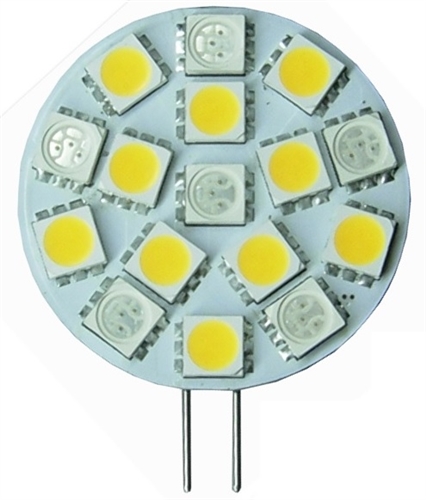 LEDs offer a number of advantages over more traditional bulbs, such as incandescent, fluorescent, or halogen. Upgrading to LED Lighting is becoming more and more common in many places, and RVs are no exception. LED lights have gotten more versatile for several different types of fixtures, both interior and exterior, and are easy to retrofit in your rig.
LEDs offer a number of advantages over more traditional bulbs, such as incandescent, fluorescent, or halogen. Upgrading to LED Lighting is becoming more and more common in many places, and RVs are no exception. LED lights have gotten more versatile for several different types of fixtures, both interior and exterior, and are easy to retrofit in your rig.
Among the advantages for LEDs, or light emitting diodes, is their longer lifespan and lower power consumption. Since they use less power, they will be less of a strain on your RV’s batteries. LEDs can produce a brighter light while also generating less heat, which is ideal in warmer weather, as they won’t contribute to heat building up inside your RV. LEDs also remain safe to the touch, which is something to keep in mind if you often go on road trips with little ones along. LED lighting uses a heat sink that can take in and disperse the heat. They are also better able to stand up to movement, making them a wise choice when driving around in your motorhome. LED light can often be directed on a specific target more easily, perfect for accent or task lighting. While they are more expensive initially, they can save you money on replacement costs in the long run, as many of them last at least 25,000 hours, if not longer. When LED lights do reach the end of their life, they simply start to fade rather than instantly going out.
When you look for LED bulbs for your RV, make sure they are designed for RV use. RV LED lights have voltage regulators that make up for power fluctuations that can happen while traveling. Also pay attention to the base type and wattage. The base type needs to match and the wattage needs to be an equivalent replacement. Another thing to keep in mind is the color temperature, which is measured in Kelvin. Color temperature can vary from around 2700K to around 6000K. Lower color temperatures are considered to be warmer, while higher color temperatures are cooler. Warmer color temperatures have a more yellow light, while cooler color temperatures have a bluer tone. Color temperatures that are closer to the middle are closest to standard white light. It’s best to look for lights that are plug-and-play. That is, they can just plug into the existing fixture without having to bypass the ballast. If you use LED lights on the exterior, be aware of how bright they are, in case you are parked around other people. LED brightness is measured in lumens, which is different from color temperature. Oftentimes a higher color temperature will have more brightness, but not always. If you’re using LEDs in enclosed fixtures, pay attention as to whether a specific bulb is made for enclosed fixtures, otherwise it may overheat.
There are a number of different kinds of LED lights available to fit almost any need in your RV, including wall & table lamps, exterior lights, and standard type bulbs. There are single or double bayonet base bulbs, G4 lights, and festoon bulbs. Some of the decorative lights also feature colored housings to fit with any interior décor. With so many options to choose from, LED lights can be a simple and affordable way to upgrade your RV.
Why You Should Use LEDs In Your RV